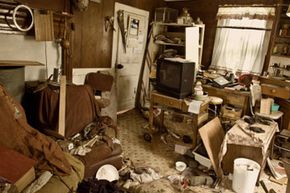In the home of a hoarder, piles of trash might reach the ceiling, and stacks of newspapers so crowd the kitchen that cooking is impossible. Sleeping, eating and bathing may take place in such clutter that these daily activities become strained and health suffers. Having guests can be out of the question.
This state of affairs is difficult to fathom. How can people choose to live surrounded -- in some cases practically buried -- in trash? Is it a choice? Or are hoarders simply slobs, too lazy to clean up after themselves?
Advertisement
In most cases, they're not. Not at all, in fact. So how does hoarding happen? And how can it be fixed?
Those homes don't fill up with trash overnight. And cleaning up isn't just a question of making a huge donation to the dump or the thrift store; it's about making a huge change in mindset. To understand how hoarders can end up in such dire straits, you need to understand how the process starts, and that begins with understanding one central concept: To hoarders, none of that stuff is trash.
Advertisement



